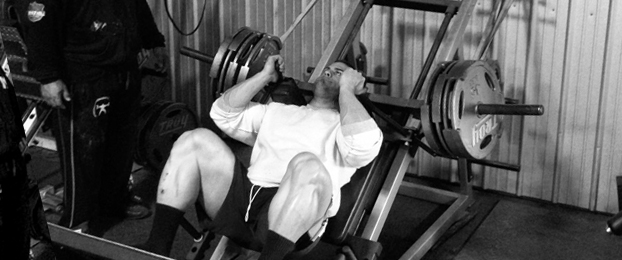
“A man has got to know his limitations.” That is one of my all time favorite movie lines from Clint Eastwood in Magnum Force. The same applies to those of us training while dealing with injuries or illness. Unfortunately, I’m well able to speak on the latter.
Before I go any further into this topic, here’s a little information about myself. I grew up playing sports in all three seasons. I was a decent but not great athlete. In high school, I dropped all sports for powerlifting and bodybuilding. I have best lifts of a 450-lb bench, a 650-lb squat, and a 650-lb deadlift, all done raw. I’m sharing this information so that you will have an understanding of where I am now. I also participated in mixed martial arts (MMA). In this undertaking, I have to say that I wasn’t even decent. However, it should be obvious that I’m used to an active, goal-oriented lifestyle.
In 2005, I was diagnosed with Addison’s syndrome. Fortunately, this is a treatable condition, and my prognosis is very good. Unfortunately, the timetable to a full recovery is of an extremely long duration, and I’m still dealing with its side effects. I can no longer train with anywhere near the
intensity or volume that I used to. Actually, it’s kind of laughable what I’m now capable of.
If I try to hit the weights too hard or push my conditioning, I suffer a relapse and have to take it easy for weeks to recover. I’m not sure what my maxes are right now, but I would guess that they are probably about a 250-lb bench, a 350-lb squat, and a 400-lb deadlift. Obviously, this is a far cry from what I used to be capable of, and it’s easy to get depressed and down about the whole thing. My doctor said that I should train lightly and just try to stay active. I also need to have a positive mental attitude and look at the bright side. Blah, blah, blah. Of course, that is true, but I have found that I can’t stay positive without having some sort of plan or goal. Simply going through the motions doesn’t work for me.
So, that brings me to the topic at hand. How do I go about training while dealing with my current condition? I now have limitations that I didn’t have before. I have had to scrap everything that I used to do. Westside templates, lifting above 90 percent, and interval conditioning all push me over the edge. I recently tried a watered down version of Jim Wendler’s 5-3-1 program but that destroyed me, too. (That really sucked because I have a friend who is also using it with fantastic results.)
So, here’s what I’ve learned and my current plan:
- You need to have goals. I used to want to total 2400 lbs. I didn’t get close, but that was my goal. Now, my primary goal is to return to my full health. I will also set achievable strength and fitness goals that I believe I can reach given my situation.
- It’s important to train in the proper environment. We have all heard this a million times. That is because it’s true. For me, right now that means training by myself at home. I recently got a high-low pulley rack, a glute ham raise, and a bar from EliteFTS. (The rack is awesome by the way). When I train at a commercial gym or with others, I tend to get competitive and load up the bar or push myself too hard. I end up setting myself back. This isn’t what I need right now.
- You need to have a realistic training plan. Again, this is nothing new, but, for me, this means recognizing and accepting what I’m now capable of. I will lift two days per week—one upper body and one lower body session with nothing going above 80 percent and nothing to failure. Conditioning will be limited to daily brisk walks with my dog. I know this doesn’t sound like much, but it’s what I’m capable of right now. I should be able to maintain this without overtraining.
- Consistency is important, no matter what your program. I have tended to be inconsistent with my training because I lack motivation due to my limitations. However, I realize that I can still make improvements, though not if I keep skipping training sessions.
Most of us are used to pushing ourselves to the limit in pursuit of our goals. I am no different. However, I have had to relearn and accept what I am now capable of. This doesn’t mean that I will have to train like this forever. It’s still important for me to have goals and a plan. In future
articles, I’ll provide updates on my training and overall health progress.








